I have to confess something. For years, I thought a “Green Kitchen” just meant painting the cabinets sage and maybe having a sad-looking basil plant on the windowsill. The whole idea felt so… technical. Overwhelming. Like something for architects, not for a busy mom trying to get dinner on the table and find a matching pair of socks. But then I started to see the connection between these “green” choices and the feeling I’m always trying to create: that deep, cozy, family-hugging comfort.
It turns out, a green kitchen isn’t about ticking boxes on some eco-checklist. It’s about creating a space that feels healthier to be in, that makes your daily rhythm a little easier, and that quietly saves you money in the background. It’s about building a true heart of the home that genuinely nurtures your family and doesn’t feel like a science project. So, let’s forget the jargon. I’m going to tell you what actually matters and the simple swaps that make the biggest difference.
Foundational Design & Material Selection
This is the stuff you decide on before you even think about paint colors. It’s the bones of your kitchen. Getting this part right means you’re creating a space that’s easier to live in and healthier for your family from the ground up, so you don’t have to work so hard at it later.
1. Evaluate Current Layout for Optimal Eco-Flow Efficiency
You know how you’re always walking back and forth across the kitchen, from the fridge to the sink to the trash can? That’s what we’re talking about here. It’s not about some fancy design term; it’s about making your kitchen work for you, not against you. A smart layout simply means less running around, which saves your energy and the home’s energy. Think about putting the fridge away from the oven. When they’re side-by-side, the fridge has to work overtime to stay cool, and that’s just wasted money and energy.

The shortcut here is to think in “zones.” Where do you prep food? That spot should be near the trash and compost. Where do you get drinks? Maybe create a little coffee and water station away from the main cooking action so the kids aren’t underfoot. I once had a client who just moved her trash and recycling pull-out from across the room to right beside her prep counter. She said it was the single most life-changing thing about her entire renovation because it made cleanup so mindless.
Once you have a layout that flows, it’s time to think about the biggest thing in the room: the cabinets.
2. Select Responsibly Sourced Wood for Sustainable Cabinetry
Okay, “responsibly sourced” can sound a little vague, I get it. Here’s what it really means: choosing wood that comes from forests managed in a way that doesn’t wreck the environment. It ensures the forest is still there for future generations. But just as important, it means the stuff your cabinets are made of won’t be off-gassing nasty chemicals into the air your family breathes. You get beautiful, sturdy cabinets that feel good to have in your home.
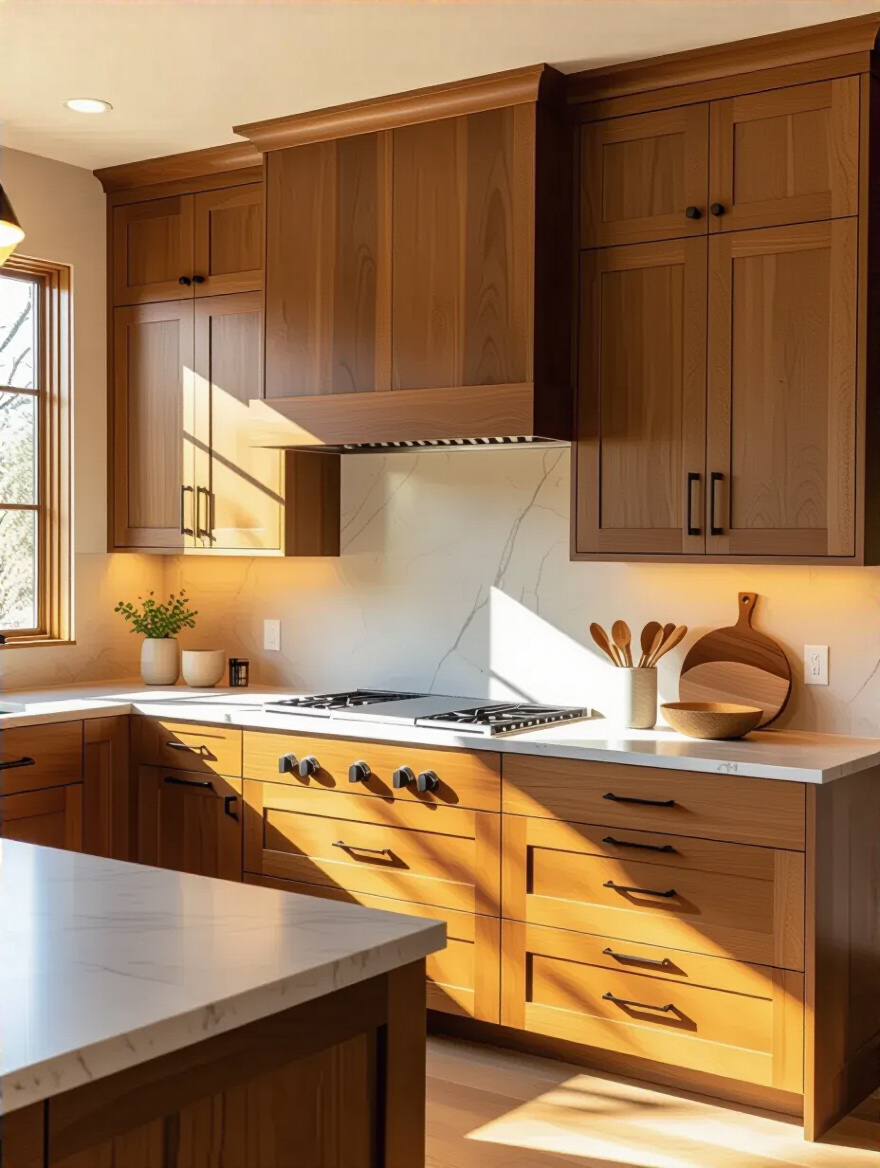
The biggest thing to watch out for is “greenwashing”—when a company slaps a leafy logo on something and calls it eco-friendly. Don’t fall for it. The shortcut is to just ask for one thing: FSC-certified. That’s the gold standard, and it takes the guesswork out of it. If you want something with even more heart, look for reclaimed wood from an old barn or factory. It has so much character and a beautiful story, and it’s the ultimate form of recycling.
With your beautiful, healthy cabinets sorted, let’s move on to the surface you use every single day.
3. Install Countertops Made from Recycled or Renewable Materials
This is where green design gets really creative and fun. Instead of just grabbing a slab of granite, you can find countertops made from all sorts of amazing things, like recycled glass bottles, old paper, or even bamboo. Choosing one of these options means you’re keeping tons of waste out of a landfill, which is a wonderful feeling. And honestly, they look incredible. Recycled glass counters sparkle under the lights, and paper composites have this warm, modern, matte finish that is just stunning.

The secret is to think about how your family lives. Are you a messy cook who might leave a puddle of wine overnight? Some of these materials, like bamboo or paper, need a little more care and regular sealing, so you just have to be honest with yourself. I had a client choose a gorgeous recycled glass countertop for their island, and it became the centerpiece of their home. The kids loved pointing out the different colors from old bottles, and it was a great, durable surface for homework and baking projects.
Now that we have the main surfaces picked out, let’s talk about the thing that pulls it all together.
4. Choose Low-VOC Paints & Finishes to Improve Indoor Air Quality
You know that strong “new paint” smell? The one that can give you a bit of a headache? Those are VOCs, or Volatile Organic Compounds, and they’re basically chemicals that leak out into the air. In a kitchen, where you spend so much time and prepare your family’s food, you really don’t want those floating around. Choosing low- or zero-VOC paint is one of the easiest and most important things you can do for a healthier home. It means you can paint a room and actually use it the next day without feeling woozy.
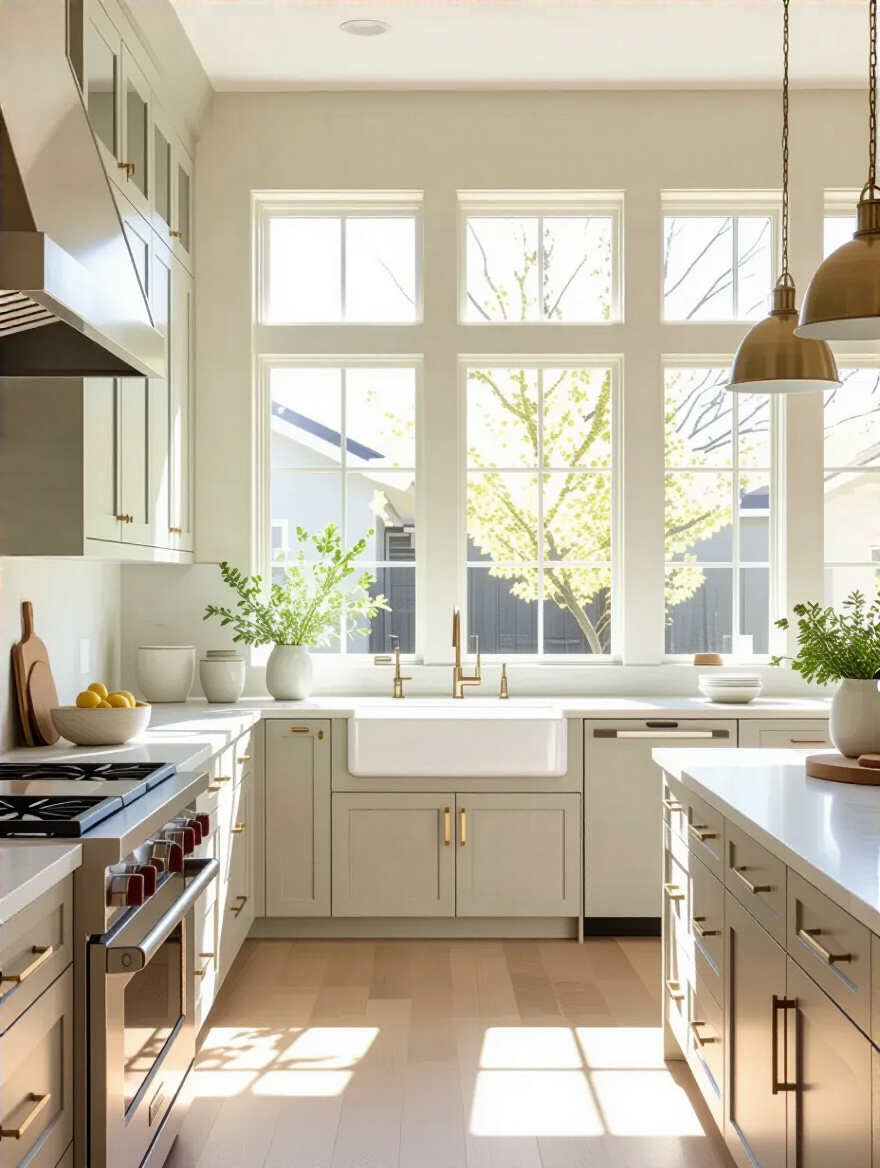
Here’s the part everyone gets wrong: they pick a low-VOC paint but forget about the primer and the sealant! All of it needs to be low-VOC. The simple shortcut is to just tell your painter upfront, “We’re using low-VOC products for the entire job, from start to finish.” They’ll know exactly what to get. Don’t let anyone tell you “low odor” is the same thing; it’s not. Look for the actual “Low-VOC” or “Zero-VOC” label on the can. It’s a simple switch that makes a huge difference in the air your family breathes.
And with our air feeling fresh and clean, let’s look down at what’s under our feet.
5. Discover Eco-Friendly Flooring from Reclaimed or Salvaged Sources
This is one of my favorite ways to add soul to a room. Reclaimed flooring is wood, tile, or brick that’s been rescued from an old building, like a barn, factory, or school. Instead of ending up in a landfill, it gets a second life in your home. It’s beautiful not just because it’s sustainable, but because it has a story. Every knot, nail hole, and scuff mark tells a tale and brings a warmth and character that you just can’t buy off a shelf.
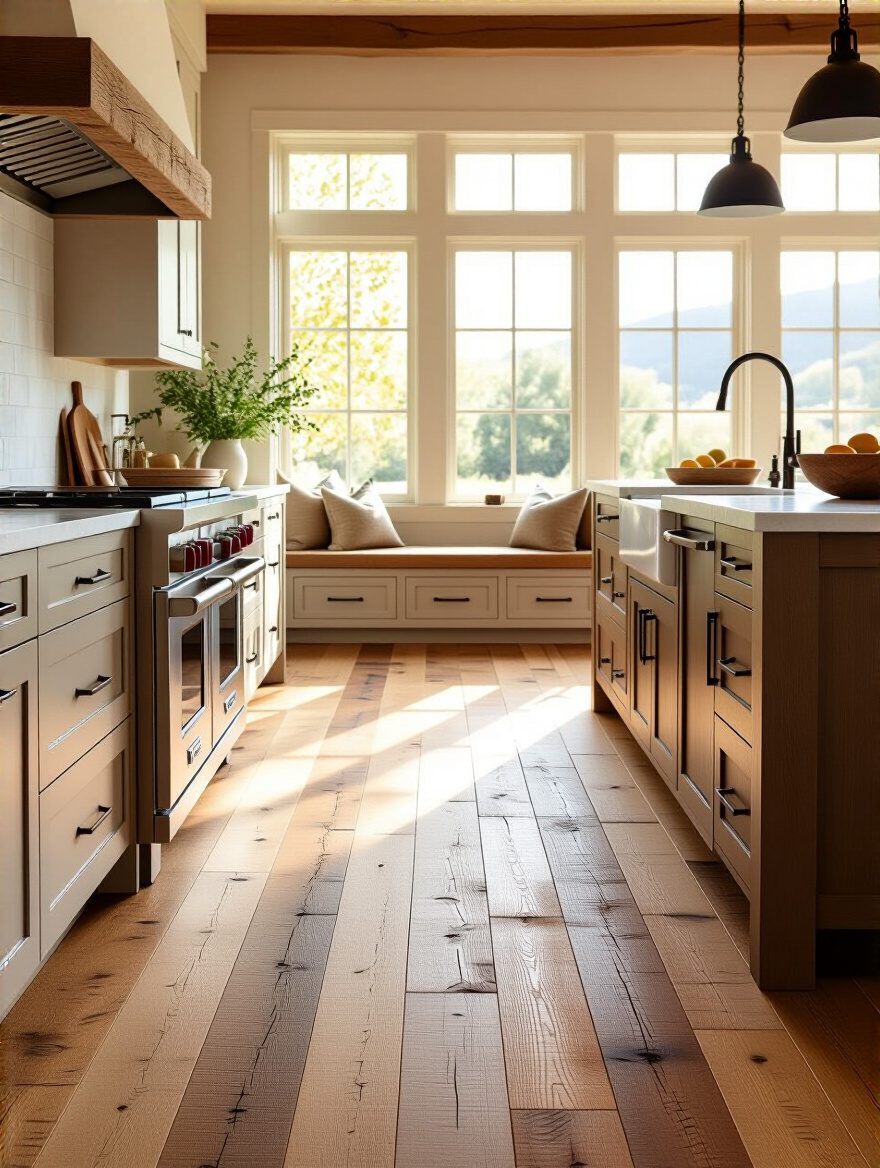
The one thing to be careful about is making sure the wood has been properly prepared. If it hasn’t been acclimated to your home’s moisture level, it can warp or gap after it’s installed. That’s why you should always buy from a reputable salvage yard—they know how to handle this stuff. A friend of mine put reclaimed flooring from an old gymnasium in his kitchen, and you can still faintly see the court lines. It’s an amazing conversation starter and the heart of his home.
This principle of using good, solid materials applies to more than just the floor.
6. Incorporate Durable, Non-Toxic Building Materials for Lasting Health
This really just boils down to a simple idea: choose materials that are simple, strong, and aren’t made with a bunch of chemical glues and binders. Think solid wood instead of particleboard, natural stone, stainless steel, and glass. These things last forever, so you won’t have to replace them in ten years, which is the ultimate way to reduce waste. And because they’re not full of synthetic glues, they aren’t releasing weird chemicals into your air.
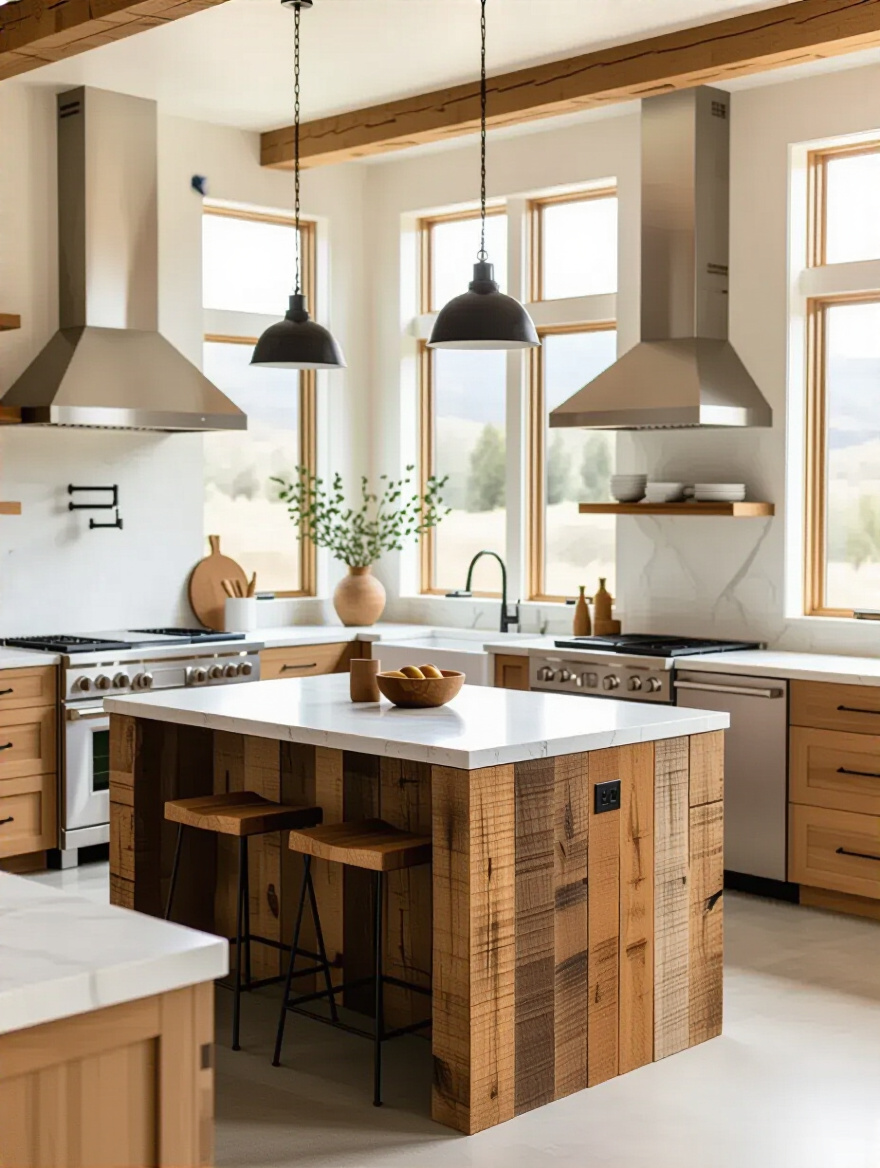
The pitfall here is getting caught up in all the labels. The simplest way to think about it is this: the closer a material is to its natural state, the better. My shortcut is to create a little “healthy materials” checklist before you even start shopping. Write down what you want: solid wood cabinets, no-formaldehyde plywood, low-VOC finishes. Hand that list to your contractor so everyone is on the same page from day one. It prevents any “oops, I already bought the other stuff” moments.
Now that we’ve built a healthy, solid foundation, let’s plug things in.
Maximizing Energy & Water Efficiency
This section is all about the quiet, hardworking heroes of your kitchen. The choices you make here will literally save you money every single month without you having to do a thing. It’s about being smart now so you can relax later.
7. Invest in ENERGY STAR Certified Appliances for Proven Power Savings
I know, I know, another label. But this is one you should really pay attention to. The blue ENERGY STAR sticker is basically a guarantee from the government that an appliance is going to use way less energy and water than a standard model. We’re talking refrigerators, dishwashers, you name it. It might cost a little more upfront, but you make that money back pretty quickly in lower utility bills. Think of it as a little gift to your future self.
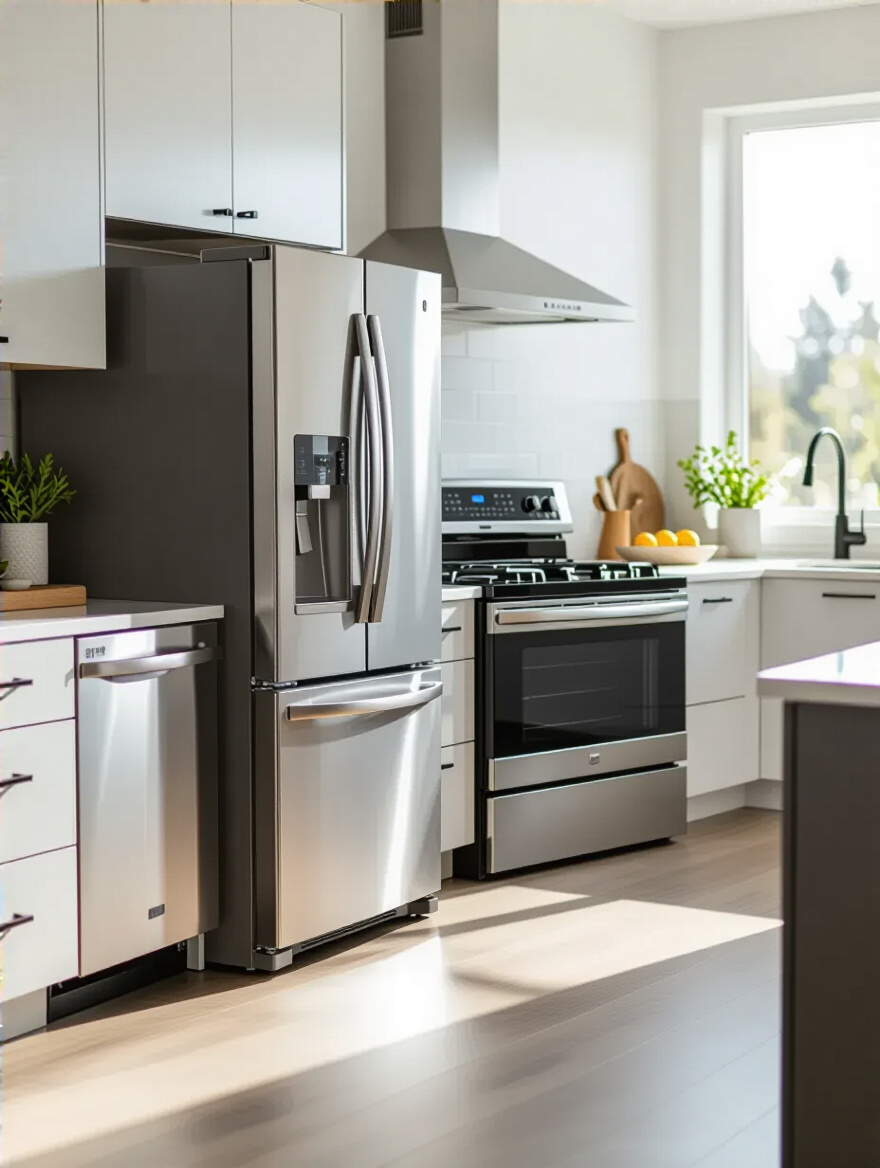
The mistake people make is only looking at the purchase price. You have to think about the Lifetime Cost. That cheaper fridge might end up costing you hundreds more in electricity over the years. My trick? Before you buy, go to your local utility company’s website. So many of them offer cash rebates for buying ENERGY STAR appliances. You could get hundreds of dollars back just for making a smart choice you were going to make anyway.
Now that we have appliances that aren’t energy hogs, let’s talk about how we light up the room.
8. Upgrade to Energy-Efficient LED Lighting for Instant Brightness & Savings
If you do only one thing on this entire list, this might be it. Swapping out your old lightbulbs for LEDs is the easiest, fastest way to save energy and money. They use a tiny fraction of the electricity of old incandescent bulbs and last for years. I’m talking, you might move out of your house before you have to change the bulb. It’s a no-brainer.
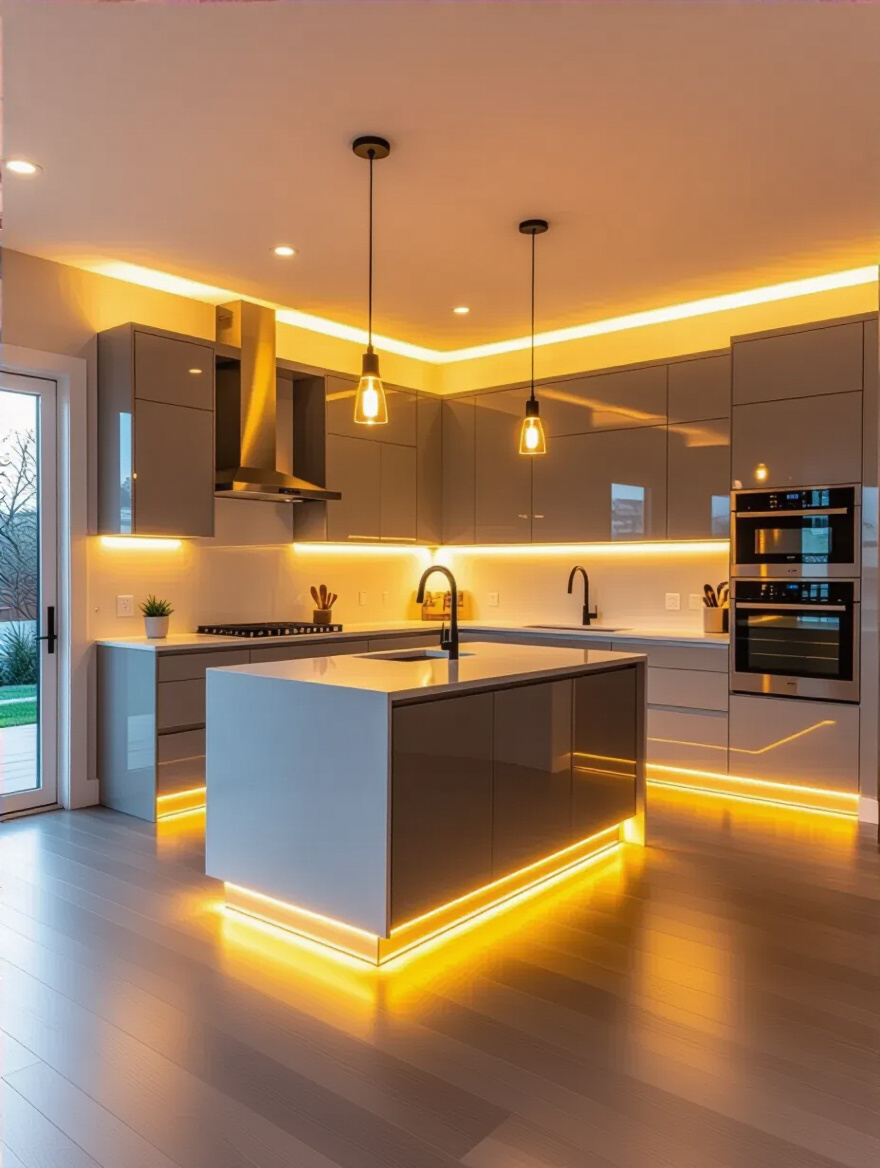
Here’s the secret nobody tells you: not all LEDs are created equal when it comes to ambiance. The number one mistake is buying bulbs that are the wrong “color temperature.” You’ll see a number with a “K” on the box (like 2700K or 5000K). For that warm, cozy, evening glow we all love, stick to the lower numbers—around 2700K to 3000K. Anything higher can feel harsh and sterile, like an office. So check that Kelvin number before you buy!
From the light above to the water in the sink…
9. Install Low-Flow Faucets to Significantly Reduce Water Waste
This is another one of those super-simple swaps that has a big impact. A low-flow faucet or aerator (that little screen you screw onto the end) just restricts the amount of water that comes out, but it does it in a way that you still get great pressure. You end up saving a ton of water without even noticing. And saving hot water means saving the energy used to heat it, so it’s a double win for your wallet.
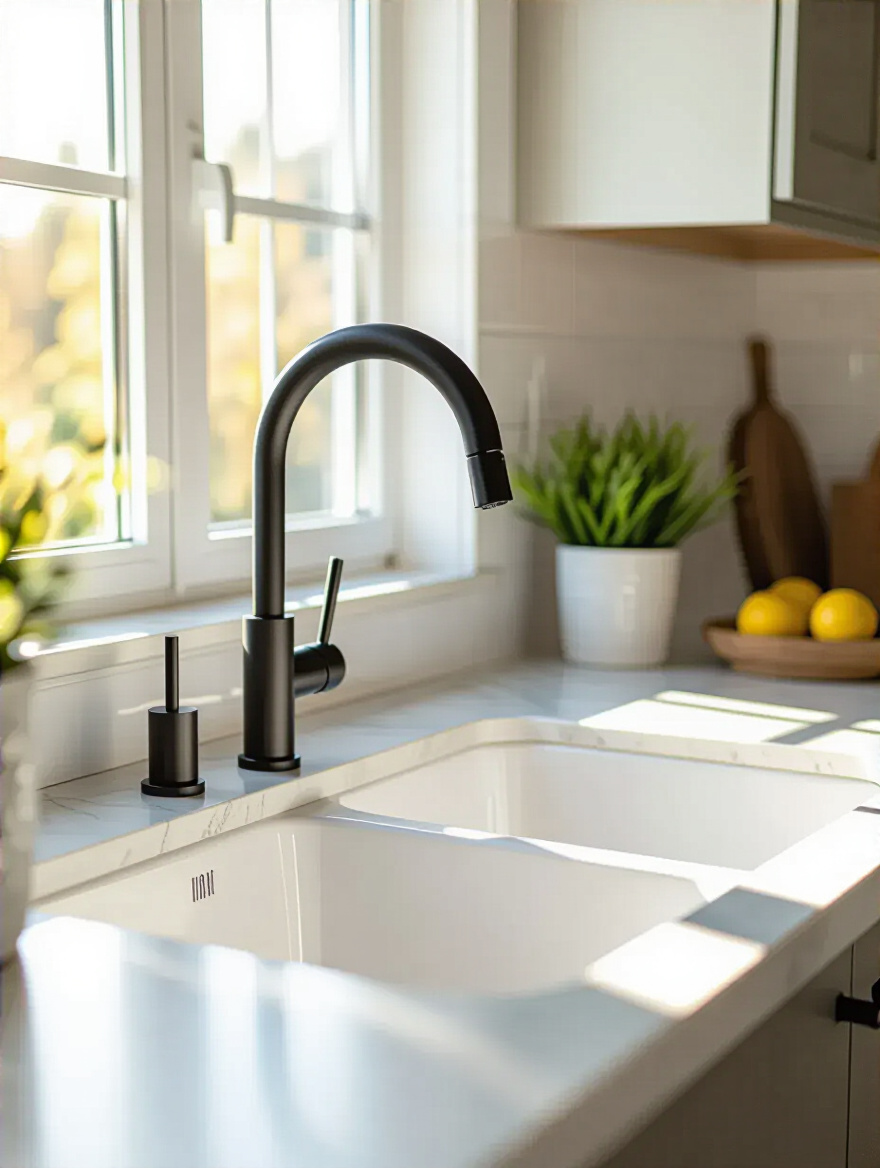
Don’t just grab the one with the lowest number, though. A faucet that’s too low-flow can be annoying when you’re trying to fill a big pasta pot. The sweet spot for a kitchen is usually around 1.8 gallons per minute (GPM). Look for the WaterSense label—it’s like the ENERGY STAR for water—and you can be sure you’re getting a faucet that’s both efficient and works great. It’s a five-minute upgrade that pays off for years.
Of course, the best light and water is the free kind.
10. Maximize Natural Light for Reduced Daytime Energy Needs & Ambiance
There is nothing—and I mean nothing—that makes a room feel better than being flooded with natural light. It just makes you feel happier and more energetic. And from a practical standpoint, the more sunlight you let in, the less you have to flip on the lights during the day. It’s the ultimate free source of light and warmth. This could be as big as adding a window or a skylight, or as simple as choosing not to put heavy upper cabinets on a wall with a window.
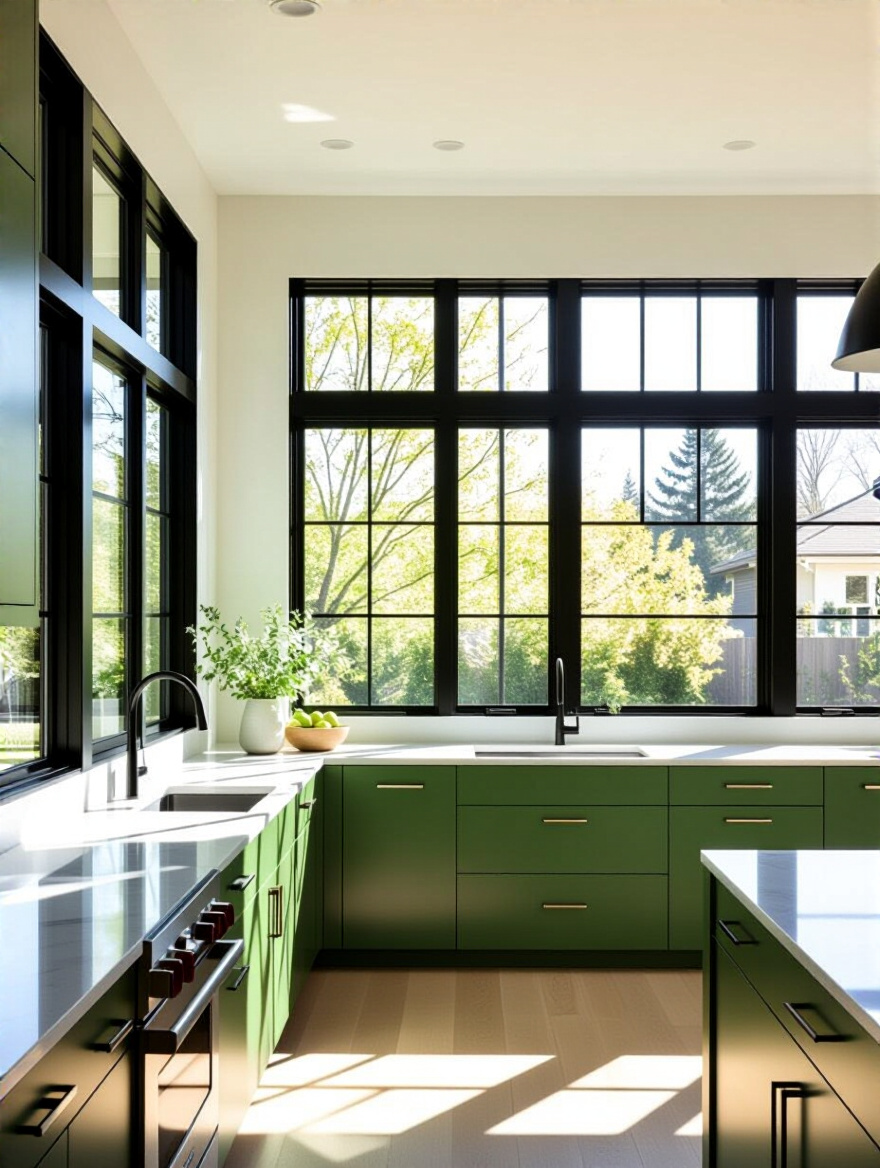
The key is to enhance the light you have. A common mistake is to put a big, dark piece of furniture or a tall appliance right where it blocks the light from flowing into the room. Instead, use light colors on the walls and maybe a reflective backsplash to bounce that beautiful sunshine all around the kitchen. I love using open shelving or glass-front cabinets near windows because they feel so much lighter and let the light pass right through.
Now, let’s get cooking with one of my favorite new technologies.
11. Choose Induction Cooktops for Faster, Greener Cooking Efficiency
Okay, if you haven’t cooked on an induction stove, you are in for a treat. It uses magnets to heat the pan directly, not the stovetop. This means it’s incredibly fast—it can boil water in about half the time of gas or electric—and super efficient, because almost no heat is wasted into the room. Plus, because the surface itself doesn’t get scorching hot, it’s much safer if you have little ones running around. And since there’s no flame, it doesn’t release any of the pollutants that gas stoves do, which is so much better for your indoor air quality.
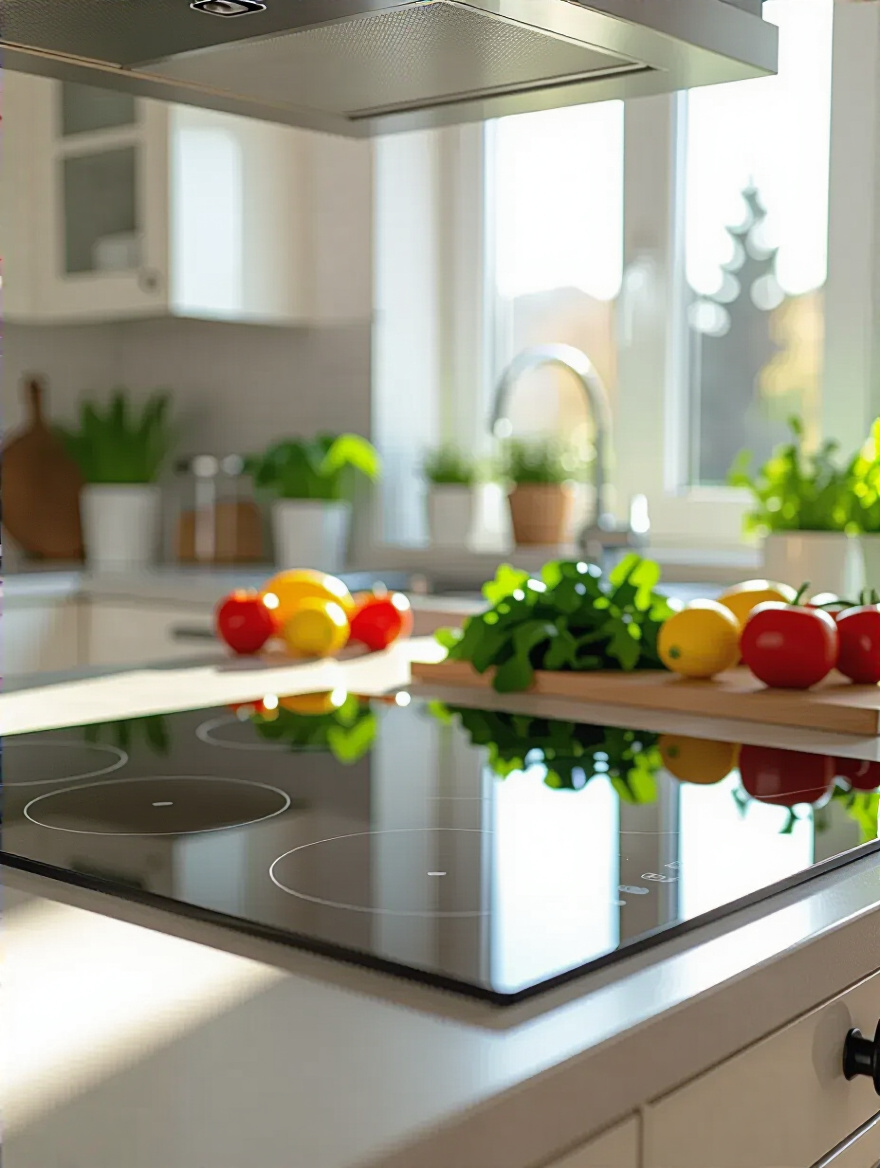
The big “gotcha” here is your cookware. Induction only works with pots and pans that are magnetic. Here’s the shortcut: just take a fridge magnet and see if it sticks firmly to the bottom of your pans. If it does, you’re good to go! If not, you will need to invest in some new ones. It’s a bit of an adjustment, but everyone I know who has made the switch says they would never, ever go back.
And to make all these efficient appliances even smarter…
12. Employ Smart Home Devices for Automated Eco-Friendly Appliance Management
This might sound futuristic, but it’s actually very simple and practical. We’re talking about using things like smart plugs or smart dishwashers to make your kitchen even more efficient, automatically. A smart plug can turn off your coffee maker completely so it’s not sipping “vampire” energy all day. You can program your dishwasher to run in the middle of the night when electricity is cheapest. It’s like having a little assistant who’s obsessed with saving you money.
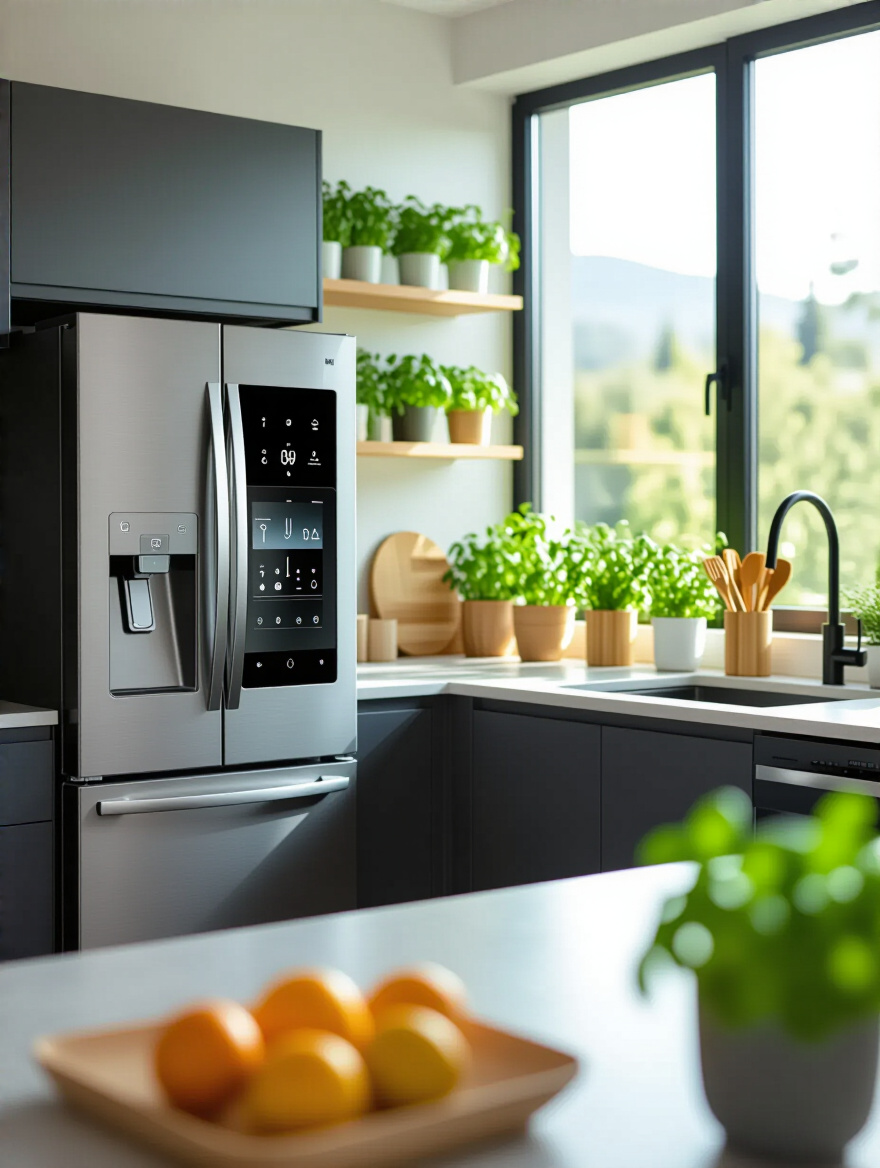
The trick is not to overcomplicate it. Don’t try to make everything smart at once. Just start with one or two things. Get a smart plug for the appliance that’s always left on, or connect your dishwasher to your home hub. Many families save $50-100 a year just by cutting out that “phantom” power draw from appliances that are turned off but still plugged in. It’s small, invisible savings that really add up.
Now that the ‘engine’ of your kitchen is running efficiently, let’s talk about how we live in it.
Waste Reduction & Healthy Living Integration
This is where the heart of a green kitchen truly beats. It’s about the little habits and systems you put in place that make it effortless to live a little lighter on the planet—and healthier, too. This is the stuff that turns your good intentions into your family’s normal routine.
13. Design Built-In Stations for Seamless Composting & Recycling
Let’s be honest: no one wants an ugly, smelly compost pail sitting on the counter. The absolute best way to make sure your family actually recycles and composts is to make it ridiculously easy and out of sight. That’s why designing a pull-out cabinet with dedicated bins for trash, recycling, and compost is a game-changer. It hides the mess and makes sorting a simple, one-step process.

My favorite shortcut for this is the “countertop chute.” It’s a small, lidded hole in the countertop right over your compost bin. You can just scrape all your vegetable peels and scraps right into it without ever having to open a cabinet. I designed this for a family in Seattle, and the mom told me her landfill trash was cut by more than half because composting suddenly became the easiest option.
Once you have a system for food scraps, let’s talk about the food itself.
14. Transition to Reusable Food Storage Solutions for Less Single-Use Waste
Think about how many plastic baggies and rolls of plastic wrap your family goes through in a year. It’s a mountain of waste! Switching to reusable options like glass containers, silicone bags, and beeswax wraps is such a simple, powerful way to reduce that. Plus, it’s healthier, as you’re not storing your food in plastics that can leach chemicals, and it saves you money in the long run because you’re not constantly buying disposable stuff.
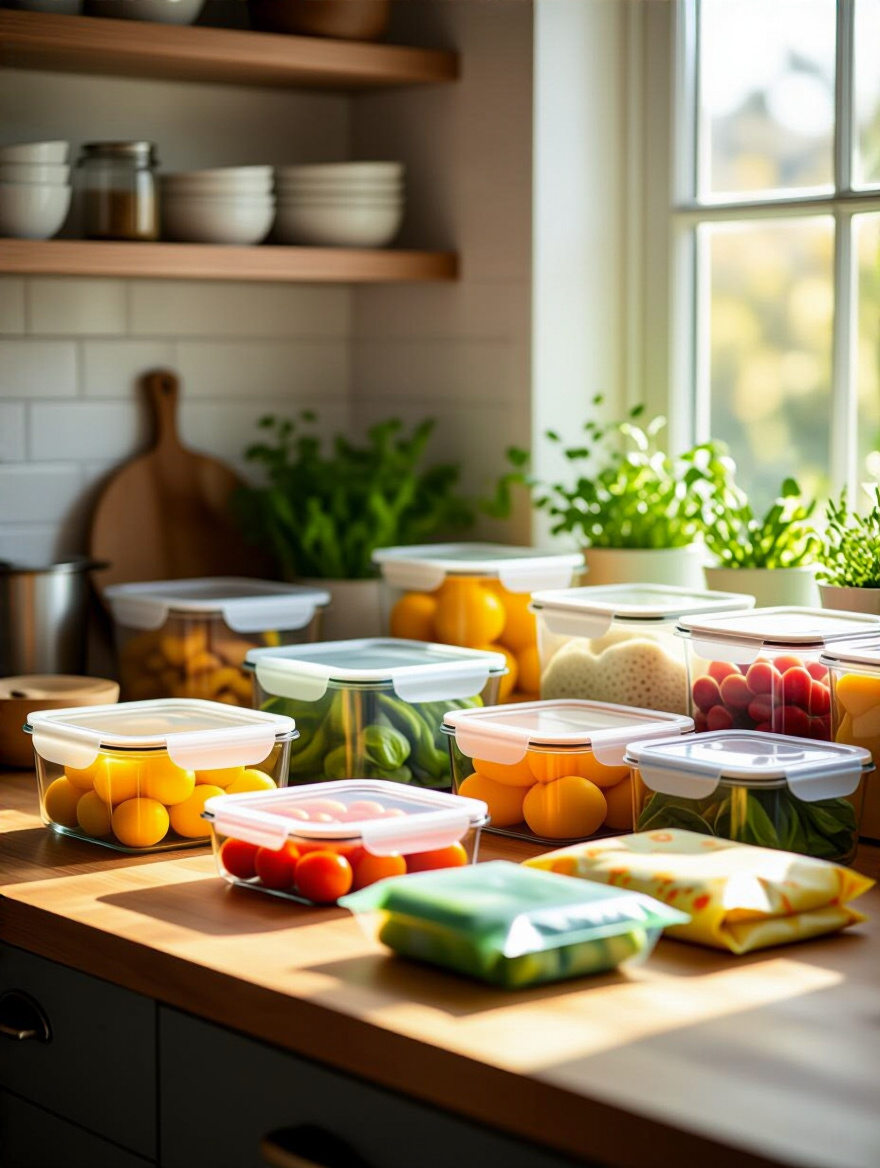
The secret to making this stick is to start small. Don’t go out and buy a million different containers at once. Just pick one thing to replace, like switching from plastic sandwich bags to reusable silicone ones. Get a few, use them, wash them, and see how it fits into your routine. My go-to is always glass containers with good, airtight lids. You can bake in them, freeze them, and reheat in them. They are the workhorses of a reusable kitchen.
And speaking of what goes into those containers…
15. Install a Point-of-Use Water Filter to Eliminate Bottled Water Dependence
If your family is still buying cases of bottled water, this is your intervention! A simple water filter installed right at your kitchen sink will give you delicious, clean water on tap for a tiny fraction of the cost and with none of the plastic waste. Think of all the plastic bottles you’ll keep out of the landfill and the ocean. It’s one of the most impactful changes you can make.

The only thing to watch out for is that not all filters remove the same things. Before you buy, it’s worth checking your local water report online (it’s public info!) to see if there are any specific contaminants you want to target, like lead or chlorine. But for most people, a good carbon filter (look for one that is NSF certified) does a fantastic job of improving taste and safety. Set a reminder on your phone to change the filter cartridge on schedule, and you’ll have endless clean water.
Once your water is clean, what about your cleaning supplies?
16. Stock Your Pantry with Non-Toxic, Biodegradable Cleaning Products
So many conventional cleaners are full of harsh chemicals that can irritate your lungs and skin. And when you wash them down the drain, they can harm wildlife. Switching to non-toxic and biodegradable products is just a kinder choice for your family and the planet. Plus, you can often get the same or better results without that overpowering chemical smell filling your home.
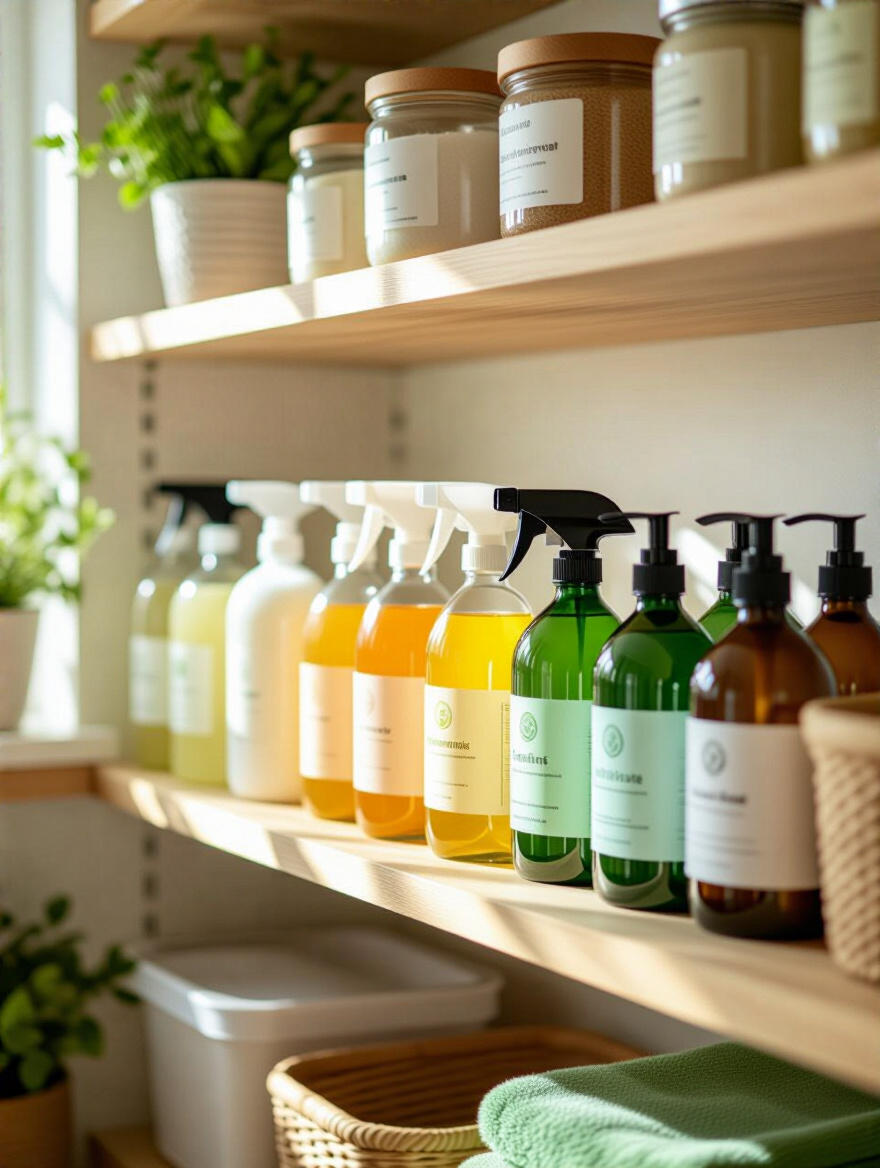
The big pitfall here is “greenwashing.” A bottle with a picture of a leaf on it doesn’t mean it’s actually safe. Look for trusted third-party certifications like EPA Safer Choice. And honestly, you don’t need a different cleaner for every single surface. My shortcut? A good all-purpose spray, dish soap, and a simple mix of white vinegar and water. That powerhouse trio can clean almost anything in your kitchen safely and effectively.
Now for a truly fresh idea…
17. Cultivate a Small Indoor Herb Garden for Freshness & Reduced Packaging
There is nothing that makes you feel more like a culinary genius than snipping fresh basil or chives from your own windowsill to finish a dish. An indoor herb garden is a joy. It eliminates all those little plastic clamshells from the grocery store, saves you money, and gives you incredible flavor right when you need it. It brings a little bit of vibrant, green life right into the heart of your home.
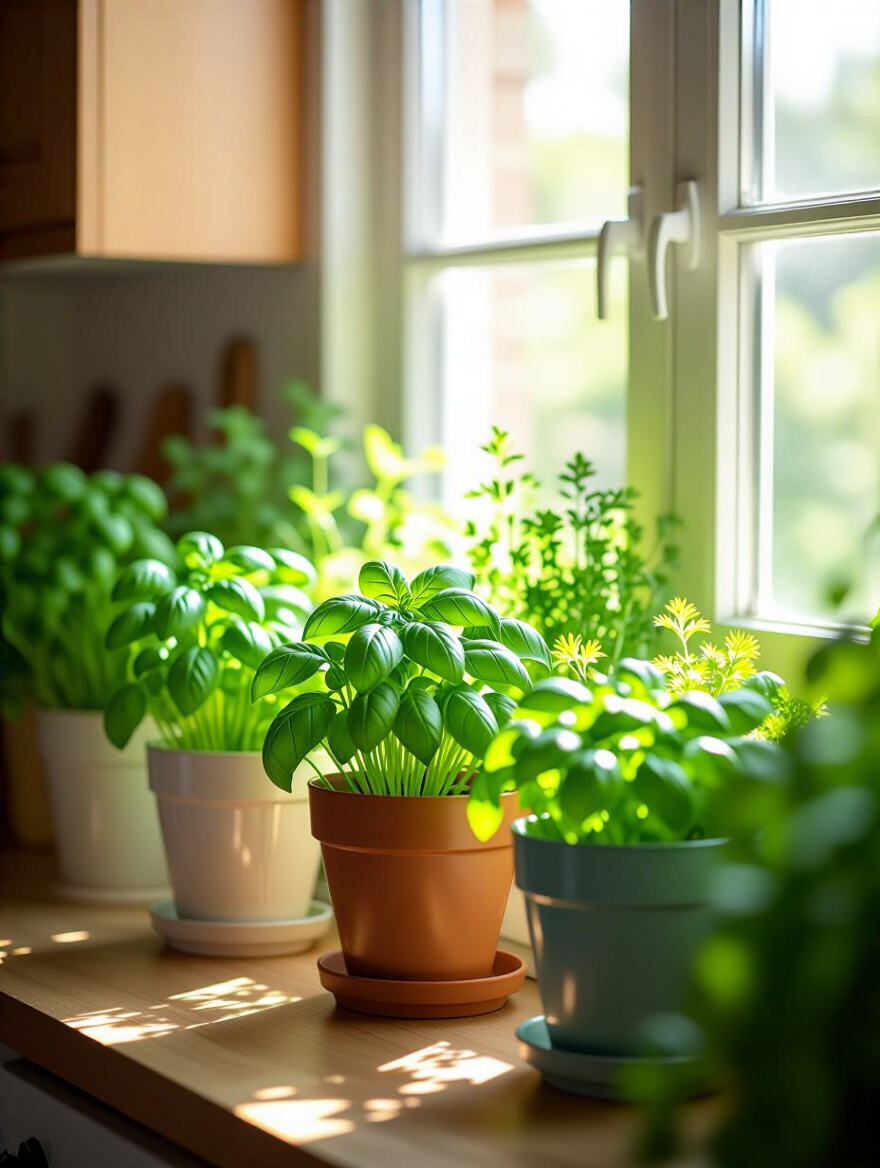
The number one killer of indoor herbs is overwatering. People just love them too much! The secret is to let the soil dry out a bit between waterings. The other secret? Light. Most windowsills just don’t provide enough light, especially in winter. Investing in a small, simple LED grow light is the best way to ensure your little garden thrives. It makes all the difference between sad, leggy herbs and lush, happy ones.
If you find you have a green thumb, why not take it outside?
18. Plan an Outdoor Kitchen Garden to Grow Your Own Produce
This is the dream, right? Stepping outside your back door to grab a sun-warmed tomato or a handful of fresh lettuce for dinner. An outdoor kitchen garden is the ultimate connection to your food. It dramatically reduces your grocery bill, eliminates food miles, and gives you access to the freshest, most nutritious produce you will ever taste. It’s a beautiful way to teach kids where their food comes from and to really embrace the seasons.
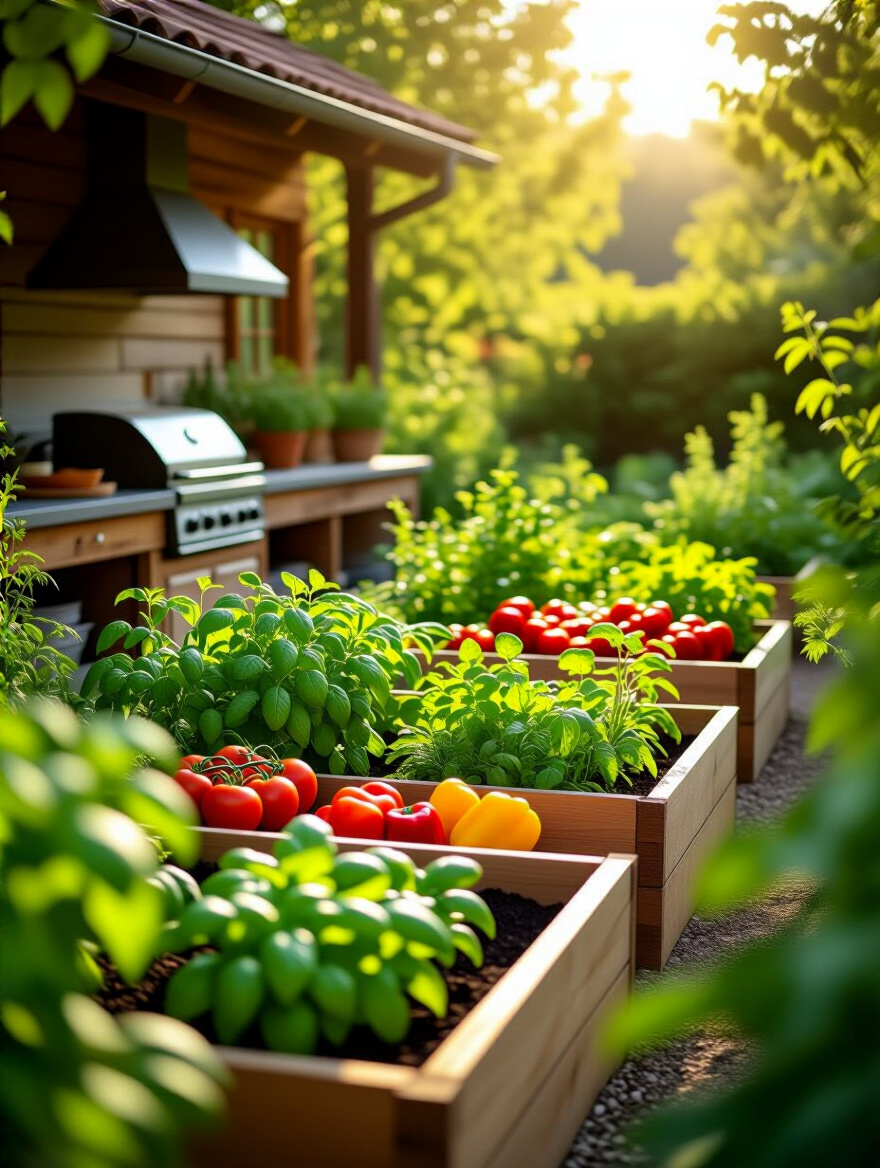
The key to success is to start small. Don’t try to plant an entire farm in your first year. A simple raised bed or even just a few large pots on a patio can produce an amazing amount of food. My pro tip is to focus on “cut and come again” greens like lettuce and kale, and prolific herbs. You can harvest from them all season long, and they give you the biggest bang for your buck and your effort.
Sustainable Practices & Long-Term Eco-Consciousness
A beautiful green kitchen is one thing, but making it a hub of sustainable habits is what makes the magic last. These are the practices that become second nature, turning your kitchen into a model of care for your family and the planet.
19. Master Food Waste Reduction Through Smart Planning & Storage
Did you know that families are one of the biggest sources of food waste? We buy food with the best intentions, but then it gets lost in the back of the fridge and spoils. Mastering this is all about having a simple system. It saves a shocking amount of money and is one of the most powerful things you can do for the environment. When food rots in a landfill, it creates methane, a powerful greenhouse gas. Saving that food from the bin makes a real difference.
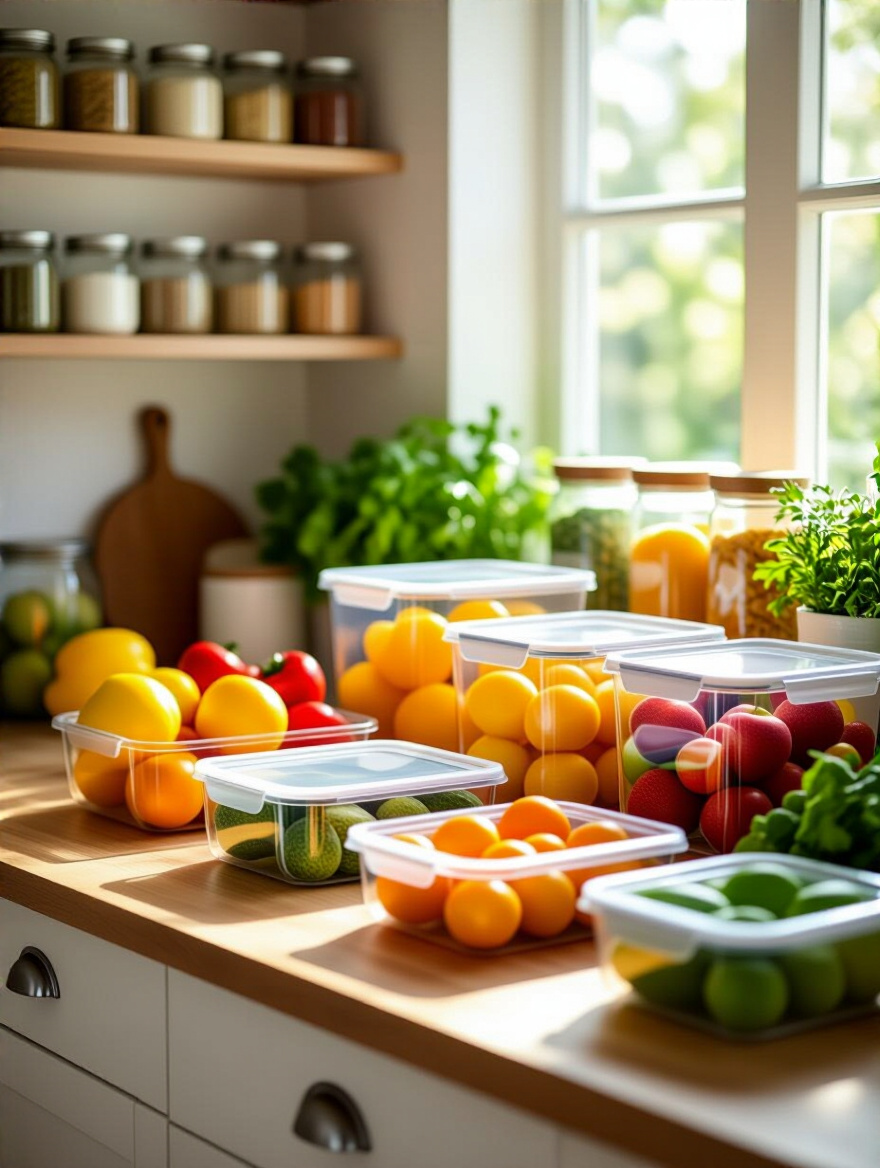
Here’s my absolute favorite shortcut for this: the “Eat Me First” box. Just get a clear bin for your fridge and put anything in there that needs to be eaten soon—leftovers, half an onion, yogurt that’s near its date. It’s a visual reminder for the whole family of what to reach for first. Combine that with a simple weekly meal plan, and you will be amazed at how much less food you throw away.
Of course, it’s not just food we throw away.
20. Adopt Reusable Kitchen Textiles Like Cloth Napkins & Sponges
This is such an elegant and easy swap. Ditching paper towels and napkins for cloth versions feels so much nicer, and it cuts down on so much waste and saves money. Think about how many rolls of paper towels a busy family goes through! Making the switch just requires a small shift in mindset and a good system.

The key is to have enough on hand so you don’t run out and revert to paper. And you need a dedicated spot for the dirty ones. I just keep a small, cute hamper right in my kitchen. When it’s full, I throw the contents in with a load of towels. It’s a simple routine that becomes second nature in no time and makes your kitchen feel a little more special every day.
What about the things you don’t want anymore?
21. Donate or Repurpose Unused Kitchenware to Reduce Landfill Impact
When you’re upgrading or decluttering your kitchen, it’s so tempting to just toss the old stuff. But your old set of dishes, that extra baking pan, or that blender you never use could be exactly what another family needs. Donating usable items to a local charity or thrift store gives them a second life and keeps them out of a landfill. It’s a simple act of community kindness.

My rule for this is “One In, One Out.” Anytime I bring a new kitchen item into the house, I have to find one to donate. It keeps the clutter from building up and turns consumption into a more thoughtful process. For things that are too worn to donate, get creative! An old colander makes a fantastic planter for your new herb garden.
These habits work best when everyone is on board.
22. Educate Your Household on Essential Green Kitchen Practices for Consistency
You can have the most beautifully designed green kitchen in the world, but if your family isn’t on the same page, it won’t work. The real magic happens when everyone understands why you’re doing these things—why you compost, why you turn off the lights, why you use the “Eat Me First” box. It becomes a team effort, a shared value that makes your family stronger.

The best way to do this isn’t to lecture, but to make it fun. Have a family meeting to come up with your “Green Kitchen Rules” together. Create clear, fun labels for the recycling bins. Make it a game to see who can save the most energy or waste the least food. When kids are involved in the process, they become the biggest champions of your new habits. It’s about building a family culture of care.
And finally, the ultimate level-up in green kitchen living…
23. Embrace Bulk Buying with Reusable Containers for Zero-Waste Shopping
This is the grand finale of waste reduction. Taking your own reusable jars and cloth bags to the store to fill up from the bulk bins allows you to buy exactly how much you need with zero packaging. No plastic bags, no boxes, no wrappers. It’s incredibly satisfying, and you’ll find that items in the bulk aisle are often much cheaper than their packaged counterparts.
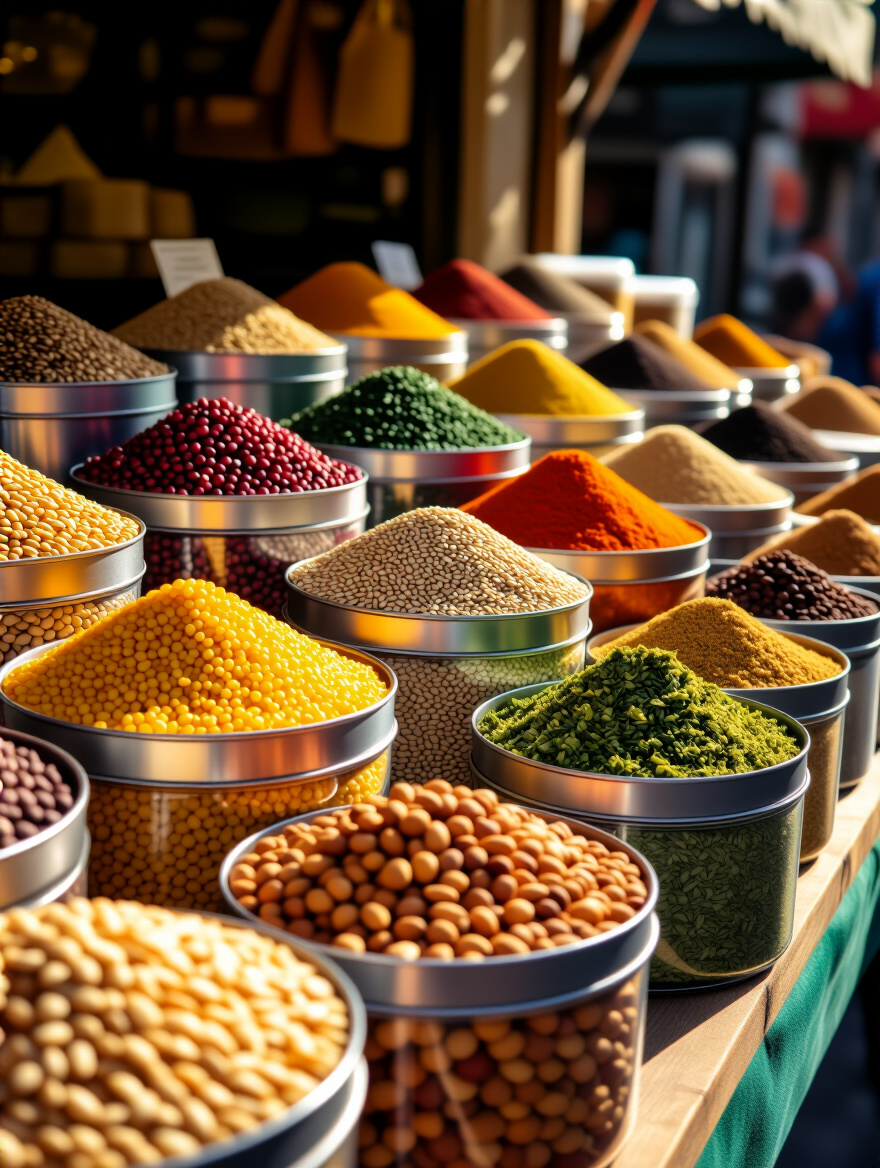
The one thing everyone forgets at first is to weigh your empty container before you fill it! This is called the “tare” weight. Most stores have a scale at the front where you can do this, and then you just write the weight on your jar with a grease pencil. That way, you’re only paying for the food, not the glass. Start with one or two items you use a lot, like oats or rice, and build from there. It’s a beautiful final step toward a truly thoughtful kitchen.
Conclusion
See? A “green kitchen” isn’t about complicated science or giving up things you love. It’s about making a series of small, thoughtful choices that add up to a huge impact—for your family’s health, your wallet, and the planet. It’s about creating a kitchen that feels like a warm embrace, a space that works with you, not against you, and a heart of the home that truly reflects your family’s values.
Don’t feel like you have to do all 23 of these things tomorrow. Just pick one. Maybe this week you’ll swap out your paper towels for cloth napkins, or maybe you’ll start planning your meals to reduce food waste. Every single step, no matter how small, is a step toward a cozier, healthier, and happier home. You’ve got this. Your kitchen is waiting to become the beautiful, nurturing space it was always meant to be.
Meta Description: Create a cozy and healthy family home with these 23 simple green kitchen ideas. Learn easy tips for saving money, reducing waste, and building a sustainable kitchen.






